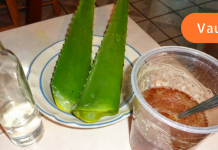Many people tend to confuse sciatica and radiculitis, often referring to both conditions as “radiculitis.” In reality, these are two distinct medical issues. While it’s true that they share similar symptoms and may sometimes be treated using similar methods, there are specific differences that must be taken into account in order to choose the right course of treatment and achieve optimal results.
What Is Sciatica?
Sciatica is inflammation of the sciatic nerve — one of the largest and longest nerves in the human body. It originates from five different levels in the lower spine and passes through the buttocks, down the leg, branching out to the knee, shin, ankle joints, foot, and toes.
When this nerve becomes compressed or inflamed, it causes sharp, shooting pain that usually radiates from the lower back down one leg. This pain can be mild or severe and may be accompanied by tingling, numbness, or muscle weakness.
Common Causes of Sciatica Include:
- Lumbar osteochondrosis (degeneration of spinal discs in the lower back);
- Pelvic bone separation during pregnancy, which can sometimes pinch the sciatic nerve;
- Piriformis syndrome (a condition where the piriformis muscle — located beneath the gluteus maximus — compresses the sciatic nerve, often due to muscle spasms caused by spinal problems like osteochondrosis);
- Degeneration of intervertebral discs;
- Arthritis;
- Injuries or trauma;
- Constipation;
- Diabetes;
- Excessive strain on the spine.
My Experience With Sciatic Pain – And the Home Remedy That Changed Everything
For several months, I suffered from lower back pain that wouldn’t go away. After consulting with a neurologist, I was diagnosed with sciatica. The medications I was prescribed did bring some temporary relief, but not for long. Soon, the pain returned — stronger and more persistent.
By chance, I came across a book on traditional medicine. In it, I found a home remedy that caught my attention. The recipe was simple:
“Boil walnut leaves in salty water, apply them hot (as much as you can tolerate) to the painful area, and wrap it tightly with a cloth. Do this procedure once a day for three days.”
Desperate for relief, I decided to try it. The very next day, I felt better. After completing the full three-day course, the pain was completely gone. Since then, even if I feel a slight recurrence, I’m no longer afraid — I’ve found a natural and highly effective solution.
A Doctor’s Perspective
It’s worth noting that the full healing potential of the walnut tree is still not fully understood in modern phytotherapy. In ancient times, this tree was referred to as the “Tree of Life,” and for good reason.
Virtually every part of the walnut tree — including its fruit, leaves, bark, and even roots — possesses medicinal properties. The plant is rich in essential vitamins, anti-inflammatory compounds, essential oils, tannins, and other healing substances.
Preparations made from walnuts are used in various forms to treat a wide range of chronic conditions affecting many different organs. Its natural properties make it valuable for both internal and external use, particularly when dealing with inflammation, infections, and nerve-related disorders.
Final Thoughts
If you’re struggling with sciatica and have found little relief through conventional methods, it may be worth exploring natural remedies like the one mentioned above. As always, consult with your doctor before trying any new treatment — even herbal or homemade ones. But keep in mind: sometimes, nature truly holds the key to powerful healing.


















